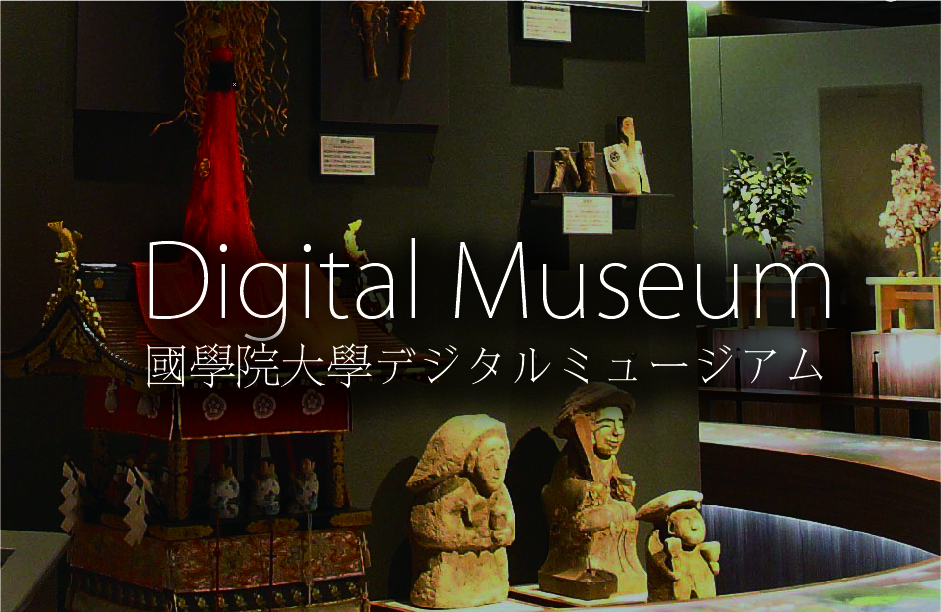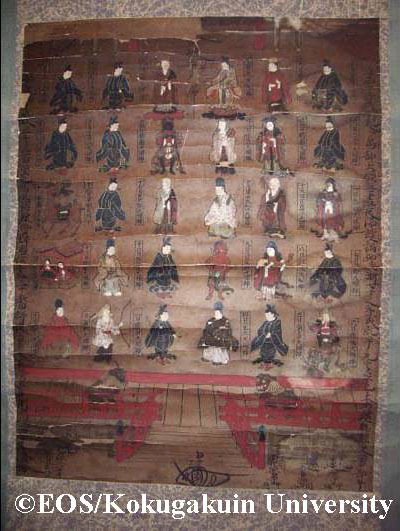- トップ
- Encyclopedia of Shinto
- Sanjūbanshin
Encyclopedia of Shinto
| Main Menu: | |
| Links: |
詳細表示 (Complete Article)
| カテゴリー1: | 2. Kami (Deities) |
|---|---|
| カテゴリー2: | Combinatory Kami |
| Title | Sanjūbanshin |
| Text | "The Thirty Tutelaries," a cultic belief in thirty tutelary kami that alternate each day of the month to protect the Lotus Sutra and the Japanese nation. The cult is especially prevalent within the Nichiren sect. The conceptual ground for the cult originated in the Tendai sect on Mt. Hiei, based on the Lotus Sutra's nineteenth chapter, "The Benefits of the Teacher of the Law," and in the theory of tutelary deities found in the sutra Bussetsu kanjō-kyō (Sk. Abhiseka sutra). Several traditions exist regarding the cult's origins; one states that the priest Jikaku Taishi (a.k.a. Ennin, ca. 794-864) first invoked the deities at the time of the construction of the temple Shuryōgon'in in 829 (ref. Konjaku monogatari, vol. 11, Genpei seisuiki). Other traditions suggest that Ryōshō, superintendent (chōri) of Shuryōgon'in, invoked the deities as tutelaries of sutra copying in 1073 (ref. Eigaku yōki, Suwa Daimyōjin ekotoba). Still others state that Ennin invoked twelve of the kami while Ryōshō later set the number at thirty (ref. Jingi seisō). The composition of the thirty deities thus appears to have varied depending on the teller of the story. According to the Ryōshō theory, the thirty tutelaries of the days of the month include the following: (1) Atsuta Jingū; (2) Suwa; (3) Hirota; (4) Kehi; (5) Heta; (6) Kashima; (7) Hitano; (8) Ebumi; (9) Kibune; (10) Ise; (11) Hachiman; (12) Kamo; (13) Matsuo; (14) Ōharano; (15) Kasuga; (16) Hirano; (17) Ōbie; (18) Obie; (19) Shōshinji; (20) Marōdo; (21) Hachiōji; (22) Inari; (23) Sumiyoshi; (24) Gion; (25) Sekizan; (26) Takebe; (27) Mikami (28) Hyōzu; (29) Naeka; (30) Kibi. From the medieval period, the cult of thirty kami was adopted within the Nichiren sect, where they were called "the thirty tutelaries of the Lotus Sutra"; in time they came to hold an even more important place than they had held in Tendai. During a 1497 debate regarding the cult of thirty tutelaries, Yoshida Kanetomo of the medieval school of Yoshida Shinto claimed that the thirty tutelaries of the Nichiren Sect had originally been introduced to Nichiren by Kanetomo's distant ancestor Kanemasu. The Nichiren Sect made no clear response, and from that time, the Shinto theories accepted within the sect (called Hokke Shintō or "Lotus Shinto") came to be influenced by the then-current trends of the Yoshida school. The cult of thirty tutelaries continued to be observed within the Nichiren sect and came to occupy an important place within the group's views of Shinto. In contrast to the thirty tutelary kami of the Tendai and Nichiren sects, the Yoshida Shinto school developed its own cultic beliefs in various groups of thirty kami. These included the "thirty tutelaries of heaven and earth," the "thirty tutelaries of the naishidokoro (the inner sanctum of the imperial palace)," the "thirty tutelaries of the imperial capital," the "thirty tutelaries of the nation," and the "thirty tutelaries of the imperial palace." Of these various groupings, the thirty tutelaries of the imperial palace were the same kami as those found in earlier cultic groupings, while those in the others were entirely different, and based on theories unique to Yoshida Shinto. -Itō Satoshi |





